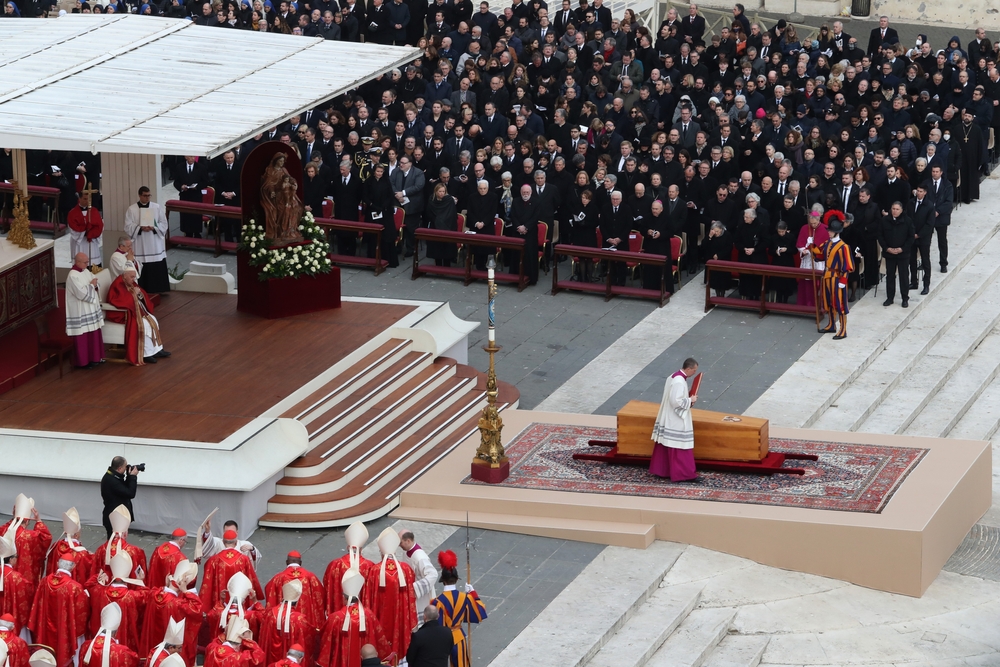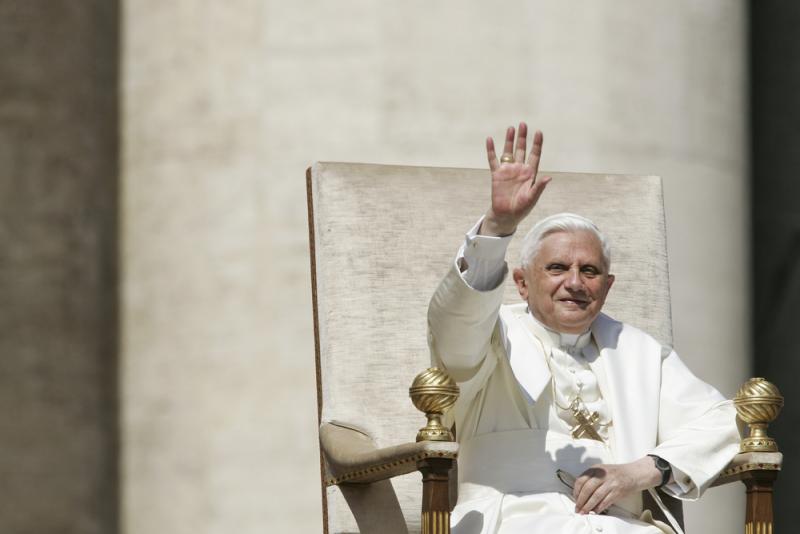The funeral mass for the late Pope Benedict XVI began this morning at 9.30am at St. Peter's Square in Vatican City. With current pontiff Pope Francis presiding over the service, the funeral marks the first time in 220 years that a sitting pope is laying his predecessor to rest.
Benedict XVI was the leader of the Roman Catholic church from 2005 until his resignation in 2013 — the first since Gregory XII stepped down in 1415 to end the Western Schism. Benedict died on Saturday, December 31, 2022 at the age of 95.
The death was not unexpected, as earlier in the week, Pope Francis had announced that Benedict was gravely ill, imploring people to pray for him.
The funeral and burial

On Monday, Italian President Sergio Mattarella and Prime Minister Giorgia Meloni were among the first people to visit the former pontiff as he lay in state. Over the course of the past three days, the Vatican says some 200,000 people joined Mattarella and Meloni in paying their respects to Benedict.
At the end of the mass, Benedict is slated to be buried in the Grottoes beneath St. Peter's, in the former tomb of Pope Saint John Paul II, whose body was moved in 2011 following his beatification, which elevated him to sainthood.
Pope I and Pope II
Pope Benedict XVI was born Joseph Aloisius Ratzinger in Bavaria, Germany to a police officer father and hotel cook mother who were both devout Catholics. It’s said that from an early age, he planned to enter the priesthood. He was ordained as a priest in 1951, and after years as a professor of theology, he was appointed Archbishop of Munich and Freising. Pope Paul VI made him a Cardinal in 1977.
In Rome, he went on to head the Congregation for the Doctrine of the Faith, a Vatican department known for the Roman Inquisition. This position earned him the nickname “God’s rottweiler”.
He was elected Pope in 2005.
An oft-divisive figure, the conservative late ex-Pope was staunchly opposed to Pope Francis’ more progressive agenda, including his views on immigration, homosexuality, climate change and allowing priests to marry. In the 1980s, Benedict led the charge against "liberation theology," a Catholic movement rooted in Latin America which emphasizes socioeconomic concern for the poor and oppressed. These theological differences between Francis and Benedict are said to have chilled the men’s otherwise warm friendship, which was depicted in Netflix’s 2019 fictionalized biopic, The Two Popes.
It was Benedict’s handling of the Catholic church’s rampant clerical sexual abuse scandals, and his alleged cover-up, for which the former Pope received most of his criticism, with many calling his actions inadequate. But supporters point to the thesis he laid out in The Church and the Scandal of Sexual Abuse, a 6,000-word letter published in 2019, in which Benedict attributed the crisis to the sexual revolution of the 1960s and long-term moral denigration that he blamed on liberal theology and broad secularization.
The future of the papacy
Some say that Benedict’s unconventional abdication has paved the way for other Popes also to consider “retirement” rather than die in office, as is tradition. In fact, in recent dealings with the press, Pope Francis has intimated that he might leave his post early should his failing health hinder his ability to do his job competently. (Indeed, at the funeral for Benedict, Cardinal Giovanni Battista Re celebrated the Liturgy of the Eucharist — which requires the leader to stand — due to Francis' increasing physical challenges.)
After a recent trip to Canada, Francis told reporters, “At my age and with these limitations, I have to save [my energy] to be able to serve the church or, on the contrary, think about the possibility of stepping aside.”









